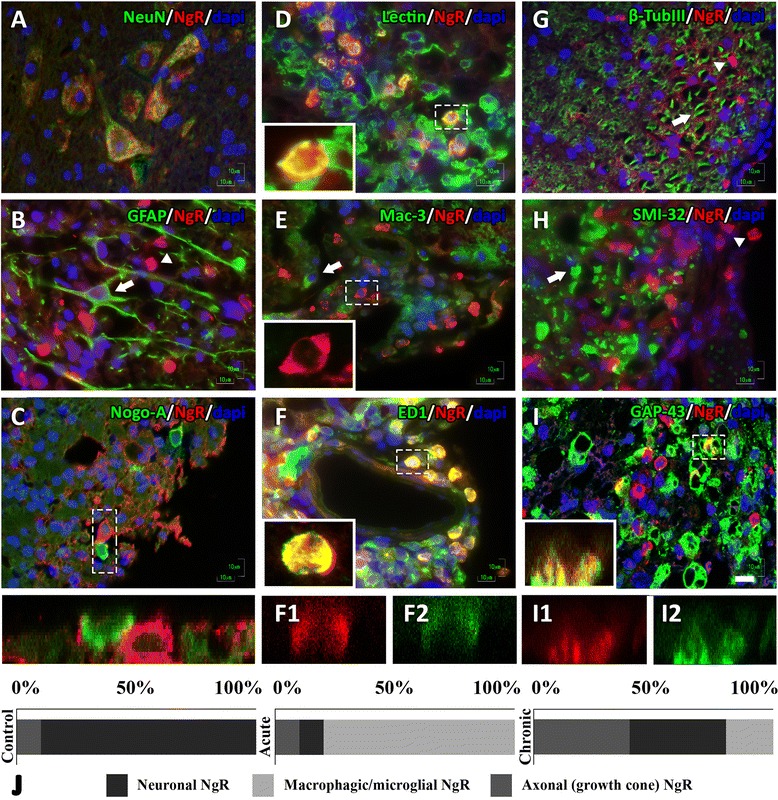Fig. 2.

Cellular and axonal localization of the NgR protein in the acute phase of EAE. Neuronal expression (A) was acquired from the motor neurons of the gray matter, while the protein was absent from astrocytes (B) and oligodendrocytes (C) of the adjacent lesioned white matter. The macrophagical expression was restricted to subpopulations of microglia/macrophages as shown by the lectin staining (D) in activated ED1-positive macrophages and absent from Mac-3-positive macrophages (E, F). Axonal NgR was even more restricted, and while it was absent from the main axonal tract (G) or damaged sites, positive for non-phosphorylated form of neurofilament SMI-32 (H), it was detected at regenerative GAP-43+ axonal growth cones (I). Inserts C, F1, F2, I1, and I2 represent z-stack scans 20 steps (0.3 μm) made in sections of 6 μm. C shows the contact point of two cells while F1, F2, I1, and I2 coexpression is shown on two different channels of the respective pseudocolor. Arrowheads indicate the NgR+ cells, and arrows indicate the negative NgR structures. J NgR % levels and its subcellular façade in controls, acute phase, and chronic phase of EAE. Scale = 10 μm
